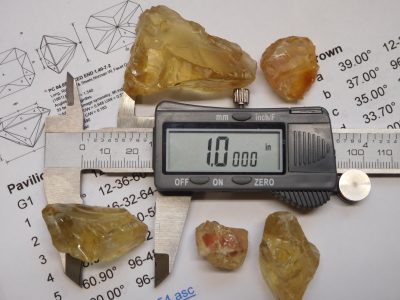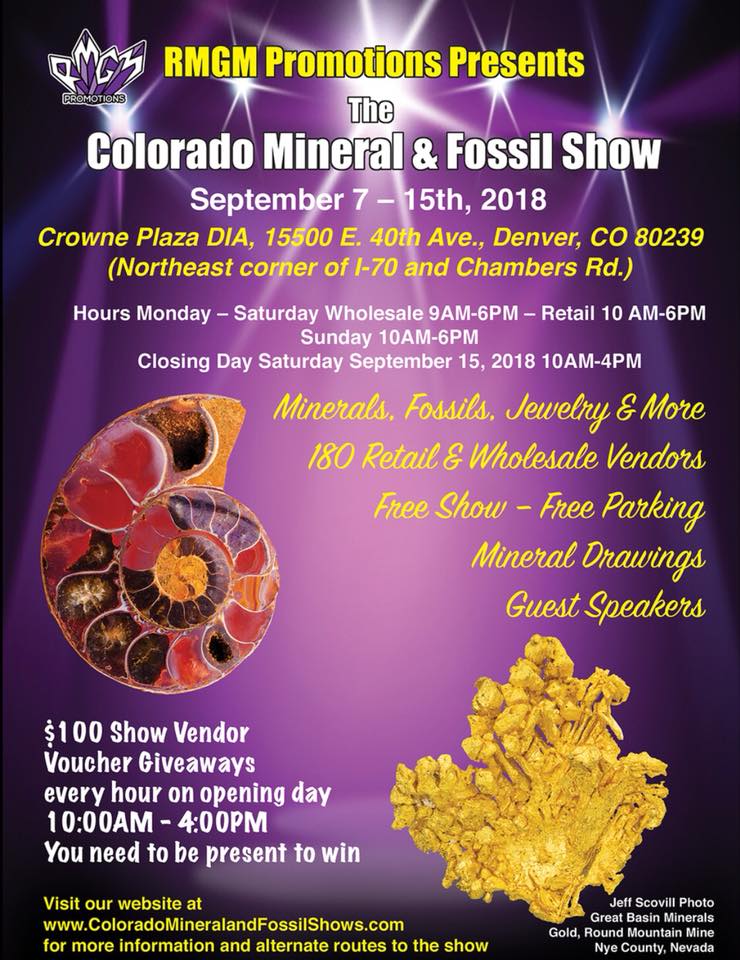 ]]>
]]>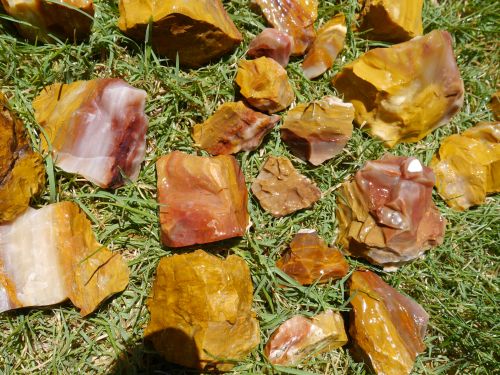
Nevada made a perfect trip for me as I was starting to foam at the mouth for some rock hunting fun, yet needed some easy hunting while I recuperate. There’s a few spots I know that I can drive up to the rocks and hunt without having to walk or carry anything too far. My special thanks to the guys for carrying my pack for me. I’d have not gotten nearly the special stash I did without just a little help from friends.
There were two spots I rock hunted that had the rocks that I’ve been wanting for some of my crafting. Those were Fernley for green jasper, and Lovelock for opalized petrified wood.
Fernley Green Jasper:
 This jasper runs from light to a dark pine green. Much of it is hard enough for lapidary, however, some is a little glassy to cut easily.
This jasper runs from light to a dark pine green. Much of it is hard enough for lapidary, however, some is a little glassy to cut easily.
 This one is mossy up close. This one is for slabbing.
This one is mossy up close. This one is for slabbing.
I like the dark greens the best.
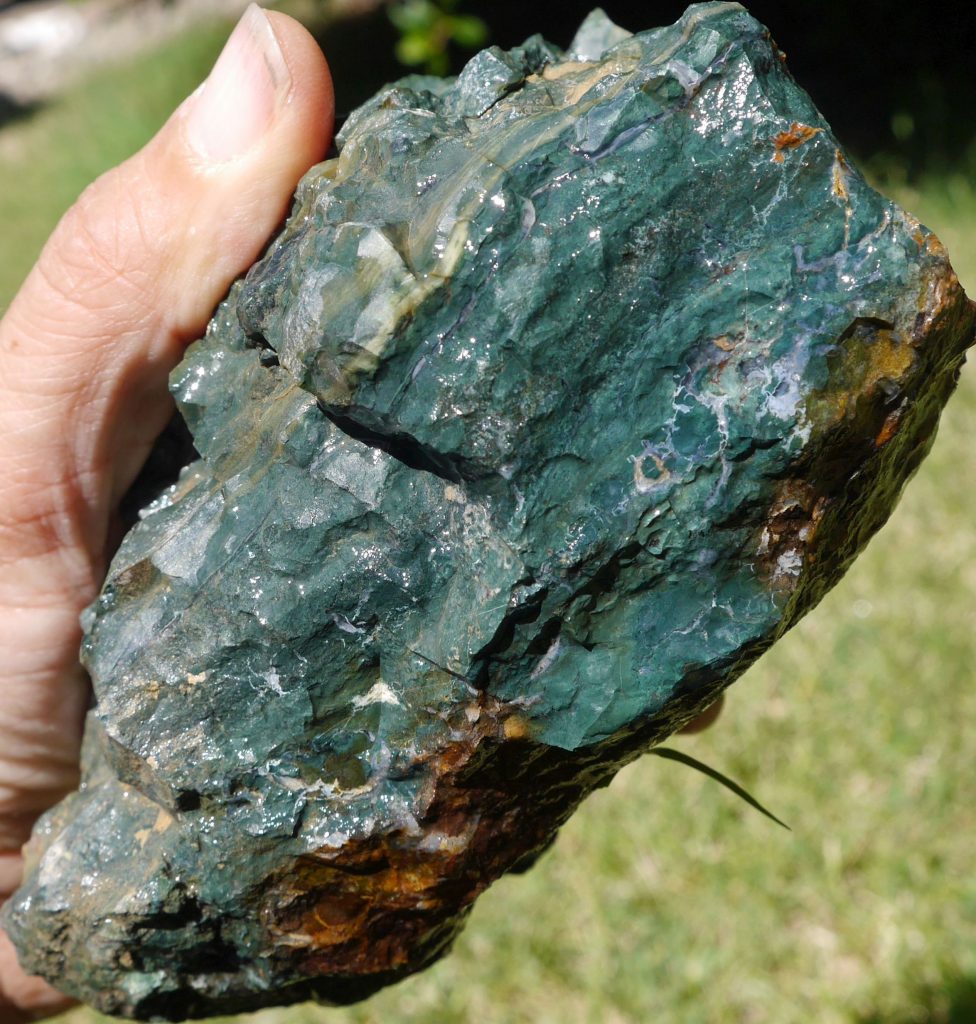
A lot of the color mix is just surface and do not run throughout the rock.
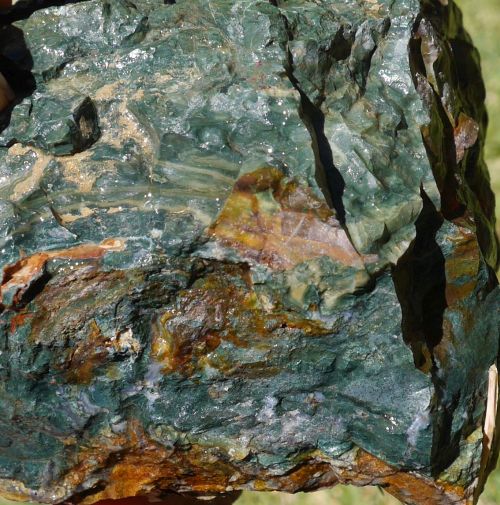
Lovelock Opalized Wood
Much of this wood is too glassy for lapidary and breaks easily. I use it for crafts and displays…….however, there are pieces that are perfect for cabbing, too. It’s so beautiful, that sometimes display is all someone would even want to do with it.
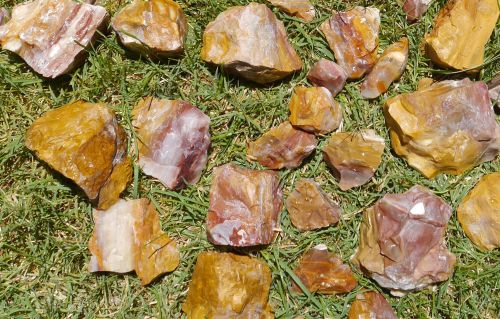
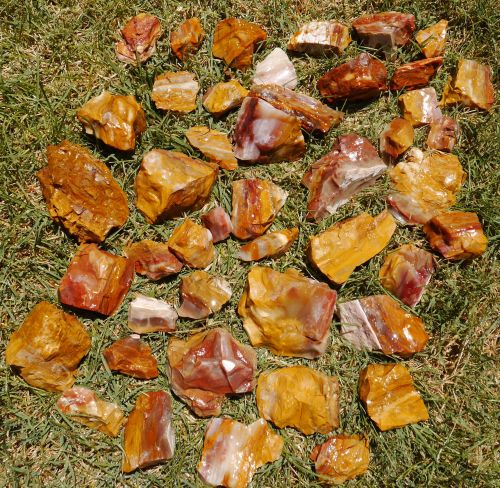
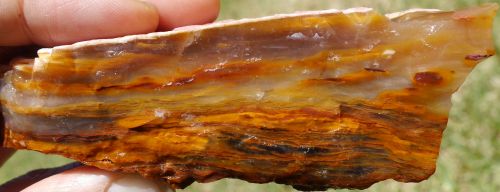
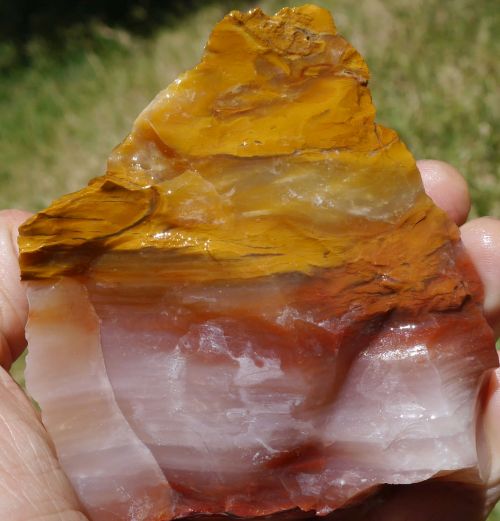
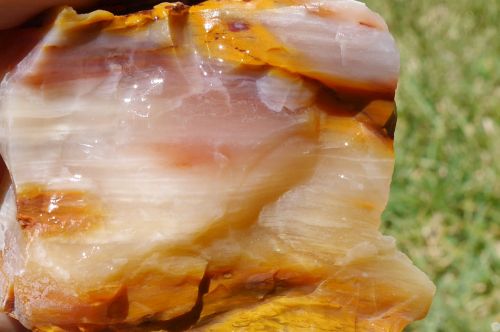
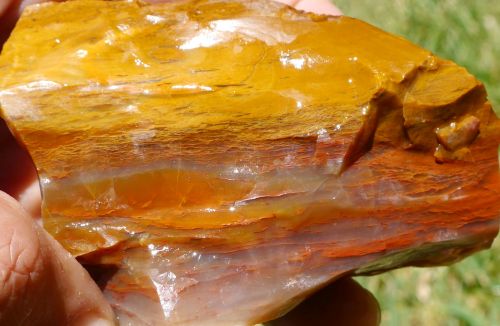
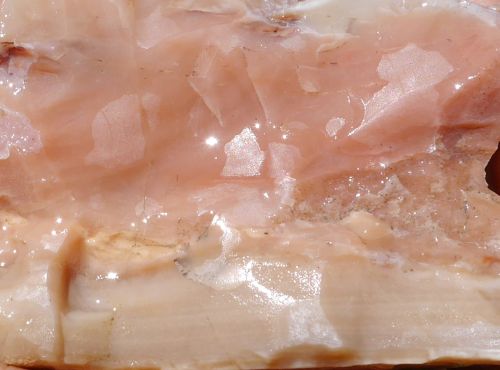
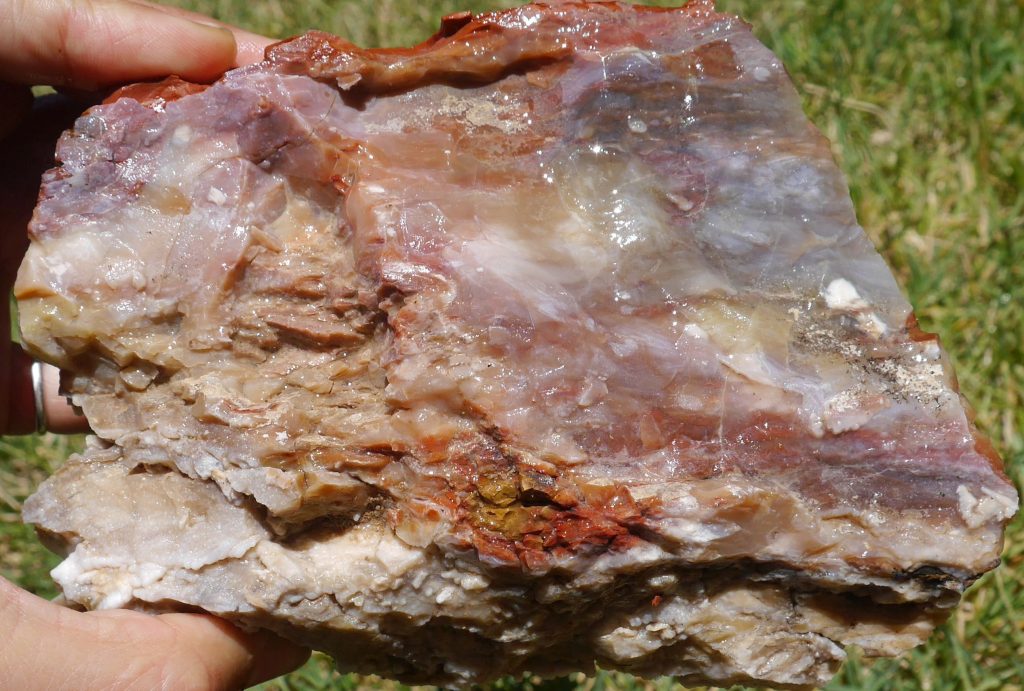
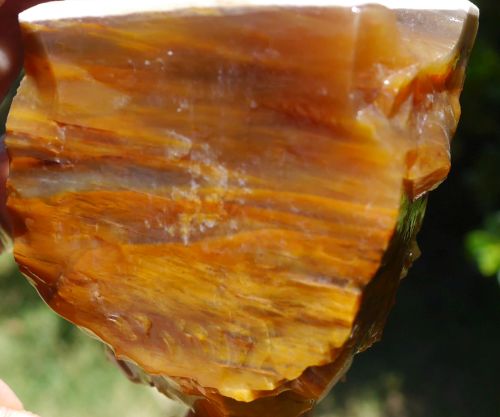
I sure hope to get back to Nevada again this summer. There’s just so many places to hunt, and such beautiful material.
]]>
It’s finally season for those of us who love to be outdoors hunting down our favorite treasures. For newbies, these activities can be pretty frustrating.
Fortunately for you metal detecting newbies, Clive from Hobbyhelp.com feels your pain and has put together a guide that will help you get through those beginners confusions.
You can find that right here:
The Ultimate Beginner’s Guide to Metal Detecting
Thanks, Clive. I’m thinking you might just have saved some treasure hounds a lot of problems this season.
]]>A lot can happen in five summers. Five years ago, a good friend suggested we catch a rock and gem show. While there, I saw an opal from the Rainbow Ridge mine (a fee dig in the Virgin Valley, NV) and decided, “I need a piece of that.” What ensued was a path that led me to the high desert of south-central Oregon and the sunstone beds near Plush, Oregon. That path also narrowed and focused my rock hounding interests. Right now, most of my efforts are in acquiring, tumbling, and faceting the Oregon Sunstone.
The crystals are a plagioclase feldspar and is a form of Labradorite. What makes the Oregon form unique is the presence of elemental copper platelets, resulting in an effect that’s known as “schiller.” 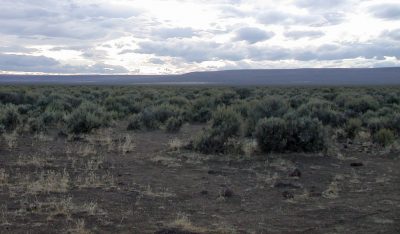 You’ll find the gems in decayed basalt deposits left by volcanic eruptions 17 million years ago. The stone is softer than most gemstones, between 6 and 7 on the Mohs scale, but they can be faceted, and, they also tumble nicely. You will find crystals with colors ranging from pale straw – yellow, pinks and reds, and rarer still, hues of green and blue. There is a great introduction to these beauties here: http://www.oregongeology.org/sub/learnmore/sunstones2.htm
You’ll find the gems in decayed basalt deposits left by volcanic eruptions 17 million years ago. The stone is softer than most gemstones, between 6 and 7 on the Mohs scale, but they can be faceted, and, they also tumble nicely. You will find crystals with colors ranging from pale straw – yellow, pinks and reds, and rarer still, hues of green and blue. There is a great introduction to these beauties here: http://www.oregongeology.org/sub/learnmore/sunstones2.htm
The crystals were designated as the official Oregon state gem in the 1980s, and there are several ways to collect examples of your own. There is a free public collecting area, a patch of ground 2 miles by 2 miles where anyone can scratch around and acquire a good pile for their own enjoyment. The picture above shows a small part of area. The BLM has a nice informational flyer here: https://www.blm.gov/or/resources/recreation/files/brochures/sunstone_rec_brochure.pdf My wife and I, and also rock buddy Rick and I, have been out here many times over the last five years. Two years ago my wife also found a nice arrow head — a small game point — in the public area. There are a few campsites in the public area and a pit toilet but there is no water in the area. Plan on bringing your own if you make the trek.
If you believe, as I do, that man has need of solitude, this might be a spot you’ll enjoy. While it may look a little barren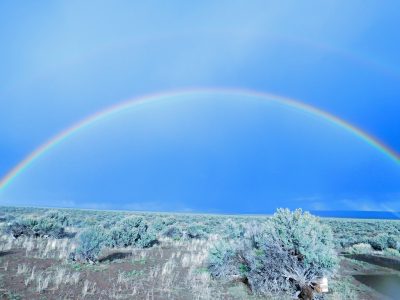 on its surface, this area has some of the grandest sunsets and at night, if not overcast, the view of the milky way and the rest of the visible cosmos is breathtaking. It’s also very quiet! The photo at right is a rainbow the appeared on the heels of a short but hard rain squall a couple of years ago.
on its surface, this area has some of the grandest sunsets and at night, if not overcast, the view of the milky way and the rest of the visible cosmos is breathtaking. It’s also very quiet! The photo at right is a rainbow the appeared on the heels of a short but hard rain squall a couple of years ago.
Below, one of the sunsets that change nightly in an array of never ending combinations of clouds, sunlight and angle.
There are also several fee digs in the area. These are private claims where, for a fee, the mine operators will point you to a pit to dig, set you up in front of a screenings table with graded ore, or to a moving belt where you pick off the passing gems. The pricing for this varies and there are a couple of business models. The Spectrum mine has the most options and their prices are reasonable. The stones pictured below all came from the Spectrum. You can find out about their operation here: http://www.highdesertgemsandminerals.com/html/spectrum_sunstone_mines.html. You can also stop by the Dust Devil mine. 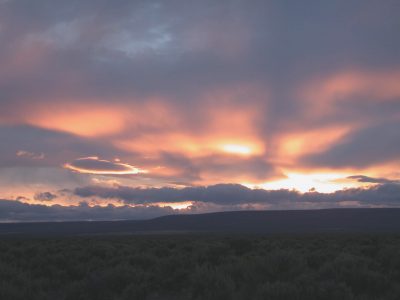 They have a different business model and while digging and belt run fees are nominal, any high-grade stone is additional and negotiated starting from the wholesale value. You can get particulars on the Dust Devil at: http://www.dustdevilmining.com/. There is one other fee dig in the area, the Double Eagle mine. I do not have much experience at this mine but there’s more information on the mine at: http://www.doubleeaglemine.com/. You can set up camp anywhere in the public area if the improved campsites are full and hit all of these locations from there as they are within a few miles of each other. Just remember to bring water, provisions, and the clothing and other means required to remain comfortable over a wide range of climate conditions. It can be wet or dry, well below freezing or well over 100 degrees. Also make sure your gas tank is full as the nearest fill up is 30 miles away in Plush. Cell reception, depending on your carrier is non-existent or fleeting at best.
They have a different business model and while digging and belt run fees are nominal, any high-grade stone is additional and negotiated starting from the wholesale value. You can get particulars on the Dust Devil at: http://www.dustdevilmining.com/. There is one other fee dig in the area, the Double Eagle mine. I do not have much experience at this mine but there’s more information on the mine at: http://www.doubleeaglemine.com/. You can set up camp anywhere in the public area if the improved campsites are full and hit all of these locations from there as they are within a few miles of each other. Just remember to bring water, provisions, and the clothing and other means required to remain comfortable over a wide range of climate conditions. It can be wet or dry, well below freezing or well over 100 degrees. Also make sure your gas tank is full as the nearest fill up is 30 miles away in Plush. Cell reception, depending on your carrier is non-existent or fleeting at best.
So far, my pursuits and efforts with the sunstone have had an adverse effect on my power bills due to a tumbler going for months at time and it was also the catalyst for a major purchase. The stars fell into place in late 2016 when I scored a near-new Facetron faceting machine (with lots of extra goodies) from a seller on Craigslist. My rock buddy Rick had up to that point been teaching me how to cut stones on his own Facetron.
The picture below shows a sample of my “hoard.” In the gem holder, two round brilliant stones cut on my Facetron. The jewel on the left is 7mm, weighing 1.5ct, the gem on the right is a little over 8mm and weighs 1.85ct. Surrounding the gem holder is some rough that I’m holding on to until I’m a little more confident in my skills. There are some very nice and potentially valuable gems hiding inside these pieces. Below the rough, some examples of what comes out of the tumbler. It’s a long process — about a month, but the results are stunning when displayed in a clear glass bottle with the sunlight hitting it at the right angle.
These gems have captured my imagination. The of history and lore of these crystals is fascinating and there is beauty and possibility limited only by one’s vision, or the wife’s! 
]]>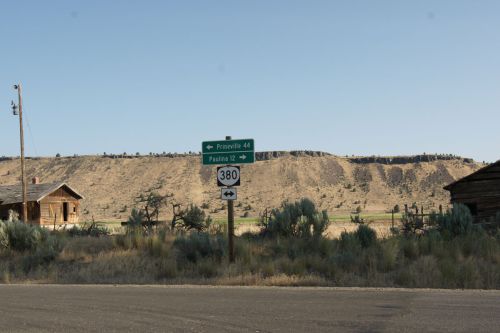
We had a pretty small group this year, but we had a great time and found some nice rocks.
I picked out a pretty large campsite area since we were expecting a few people that ended up not being able to get there. There was a lot of good conversation between sleep and hunting.
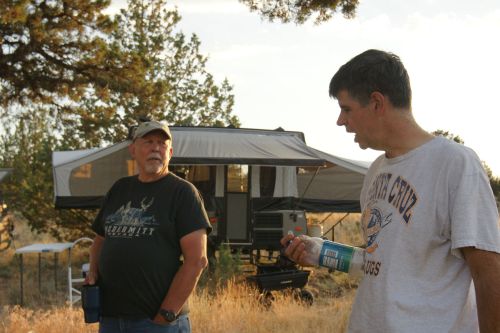
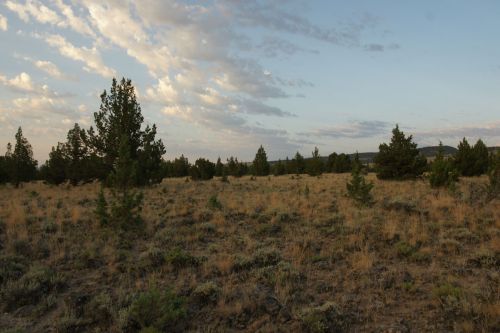
I arrived about 5 minutes before Dan (Danointhenw) and his pal Rick (Scorpion King) drove in. Not much of a nap.
After they set up camp we decided to go explore an area that produced some great wood for some of us before. I was extremely disappointed to see the area either so blown over or picked over (or both) that there were few signs left that it had once been a productive area. Even the jasper outcrops were gone and for the most part, the roads were grown over to almost being untraversable.
Later, back at camp, Matt (Oxenkiller) made a late arrival.
The next day we headed out to my green wood area. Luck seemed to be with us there. Rick came ready to haul some big finds, and he was well rewarded for it.
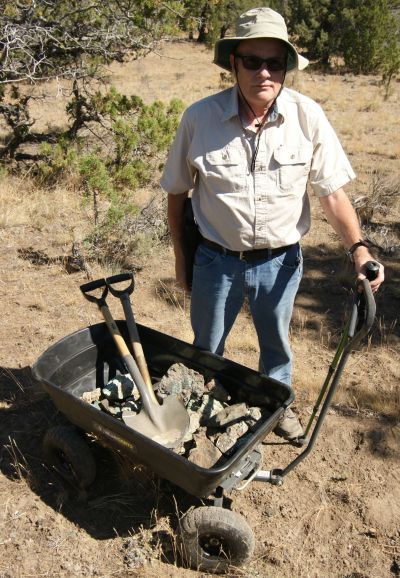
Dan found some great color variations:
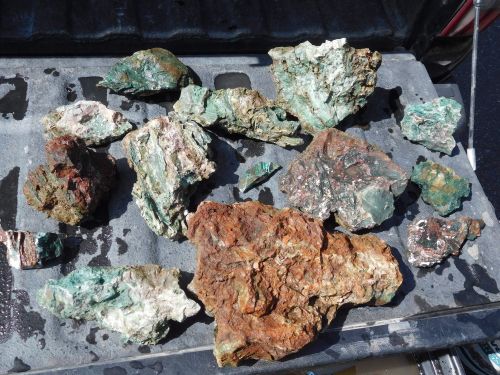
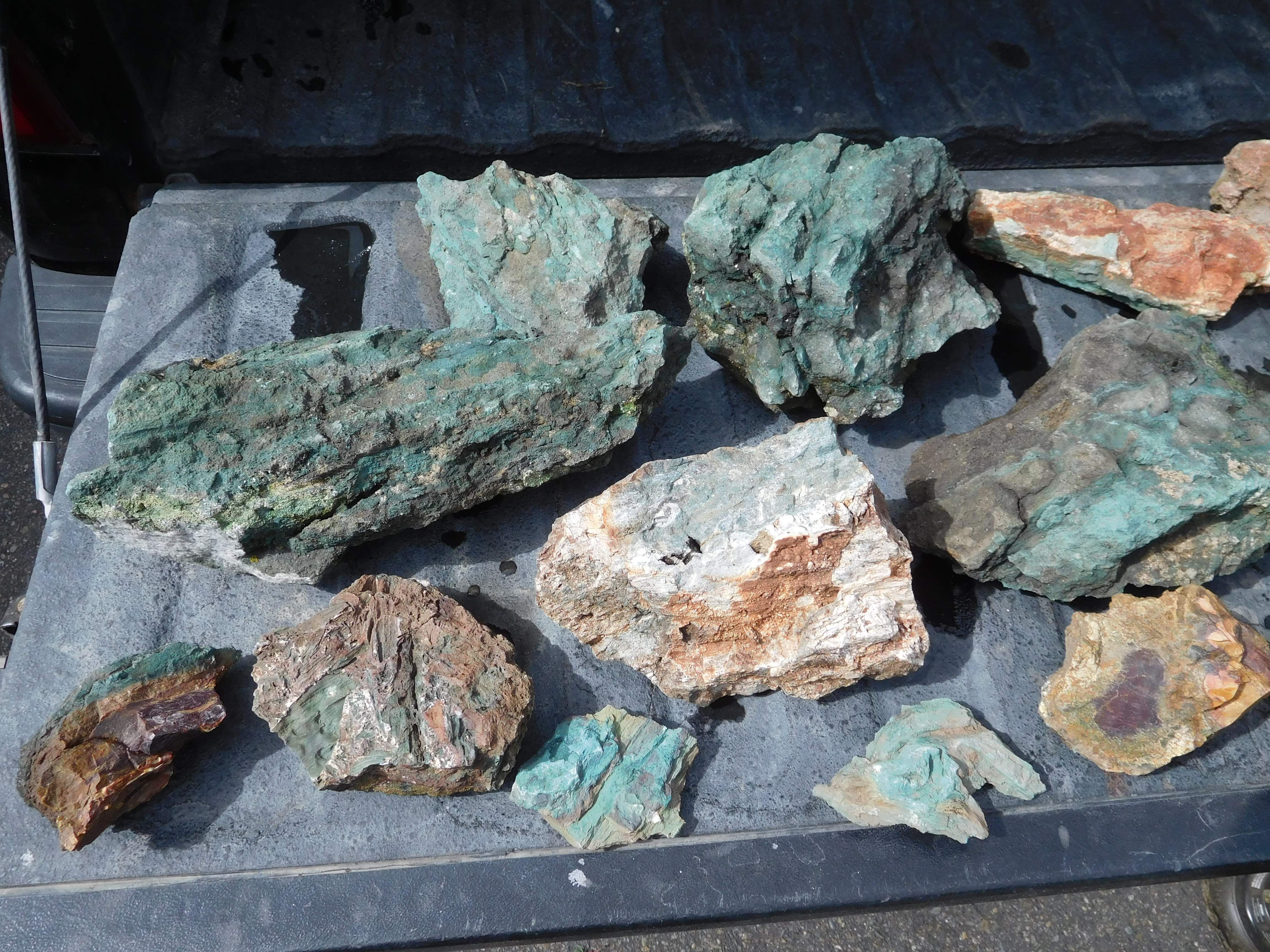
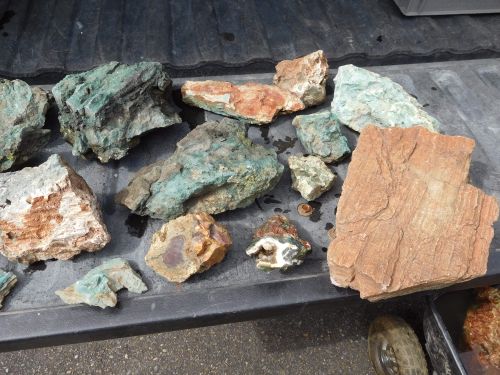
Matt took his home and cleaned them up a bit before taking pics:




The weather was pretty warm but not seasonally hot. It was beautiful in the shade of the trees, where I ended up resting frequently just absorbing the scenery.
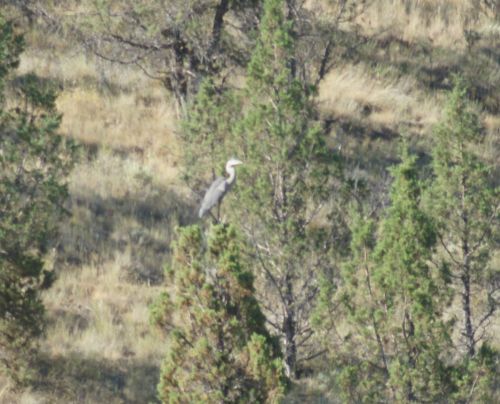
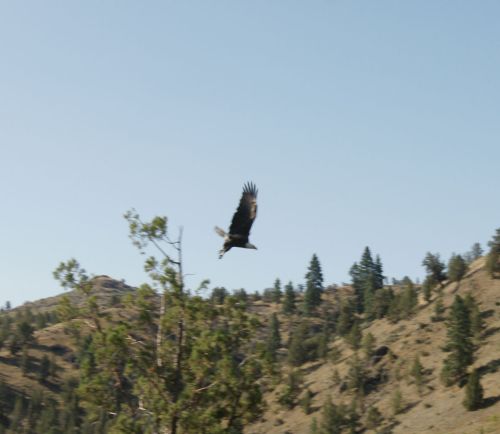
The next day the guys wanted to hunt something a little different and we headed off to glass butte, which still has plenty of good rock to go around.
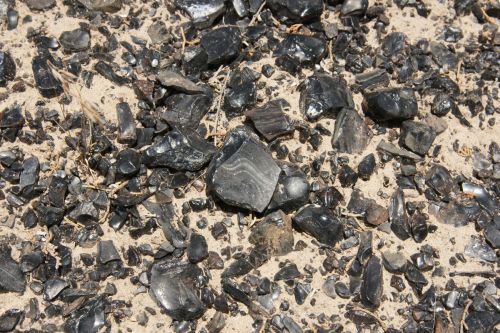
We ended up doing a little climbing for the red and black that seemed to be a favorite with all of us. Matt’s favorite was a chunk with more red than black in it.

I got the prize of the day with a chunk of gold sheen. The swirls are inside the rock – the face is smooth although it looks layered in the pic.
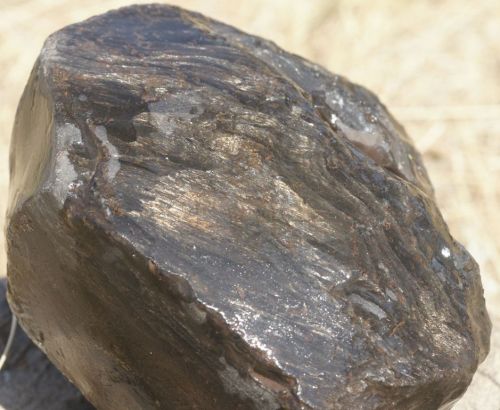
The next day, with everyone else on their way home, I wanted to check out the Camp Creek site so went into Paulina to get gas from the one pump East of Prineville in a lot of miles. I was a little shocked to find it $3.89 per gallon!
I was glad the guys had opted for Glass Butte the day before. The Camp Creek site was hunted out to a point it hurt to see it. There were a few very small pieces of limb cast in one area that was once rich with nice ones. Even those were few and far between. The roads, other than the main one through, are disintegrating, and it was rough maneuvering to my favorite spots out there. Being designated a wilderness area, it’s highly unlikely that those roads will be repaired. So my time there was short and I said a sad farewell to another area that will belong to Oregon’s rockhounding past.
On my way to Hwy 20 I did a little exploring here and there, and picked up a few little, plain agates, but didn’t find any other areas with any concentrations of something exciting. There was one road I traveled for a ways, but it got rough enough that I thought it might be better to explore when I had a tailgater or two with me. I’m a little beyond liking long walkouts any more.
]]>
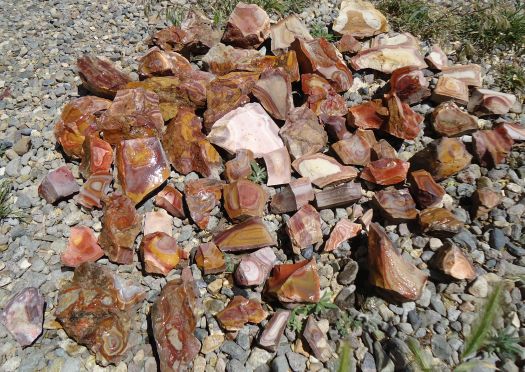
When I got to the publicized site, I was amazed to see the traffic. The first time I ever went to the location mine was the only rig there. And so it was all that year. This time I just shook my head and passed by all those people at the main site and traveled out further where the rock is colorful, but not the pink and yellow of the one I would go back to later that afternoon. I was out to get some of all of it. And I did.
With just a few days left until I head out for Oregon, and a few strength limitations, I was cautious about picking up the boulders I wanted. If I’d had a jackhammer with me, I could have taken half a hill of beautiful stone. As things were – I picked up only one actually too big to carry stones. The rest were of varying sizes. From 3 fist sized to a few just small stones with nice banding.
At my first stop the stones were pretty vivid.
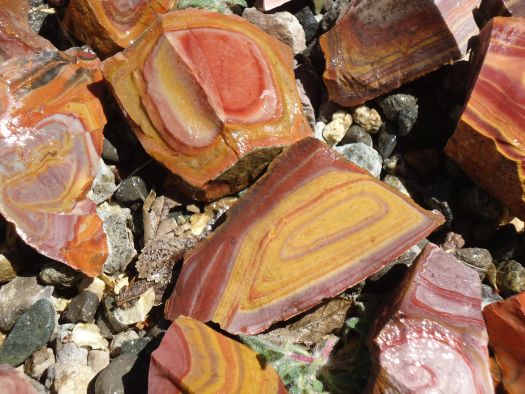
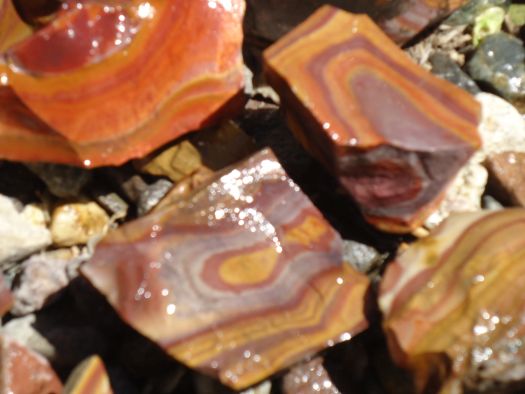
The second site I visited had the pink and yellow stone that the place is known for.

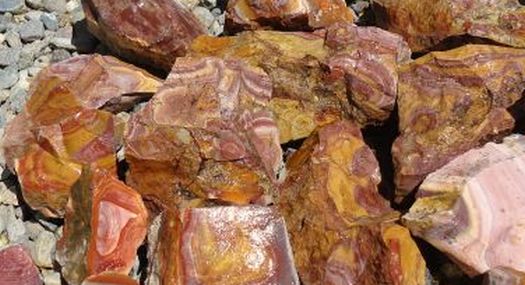
And of course the boulder. I had fun getting this thing back to the rig. Trust me on that one. I’ve carried heavier, but this was a struggle. It’s pretty thick and I’m turning into a little bit of a whimp. Still – this is the one I HAD to have.
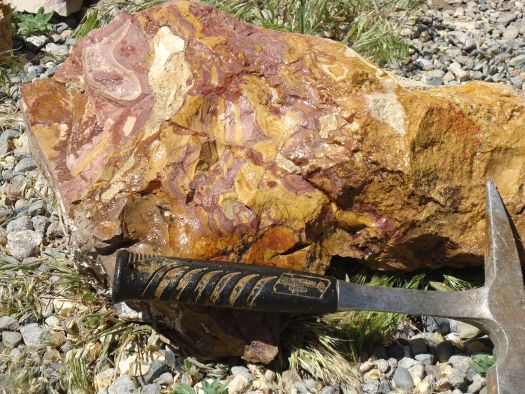
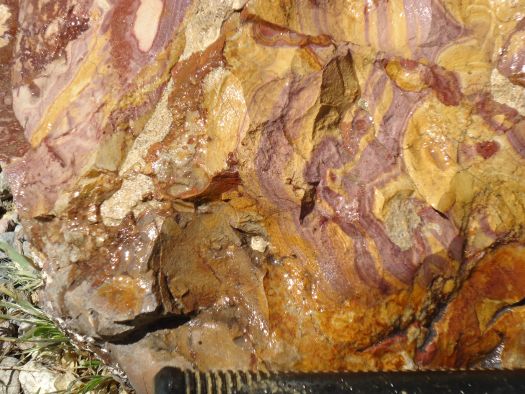
Looking forward to showing a few of these rocks after they’re cut.
]]>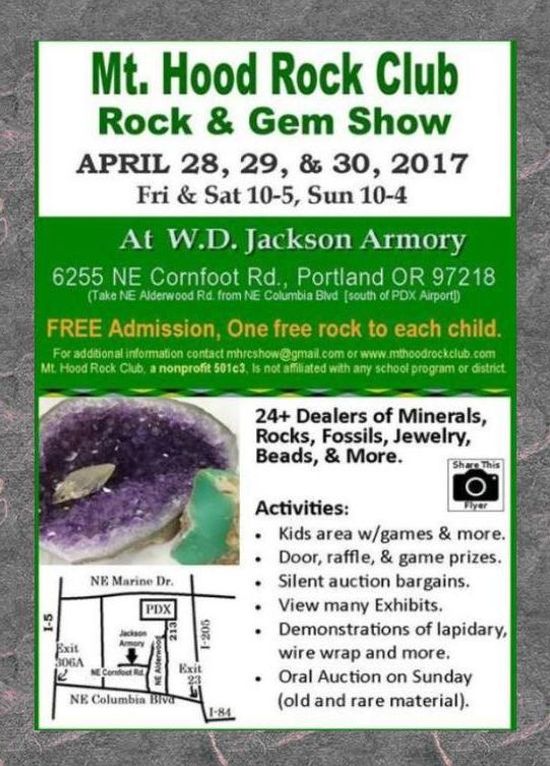
For more info: [email protected] www.mthoodrockclub.com
]]>
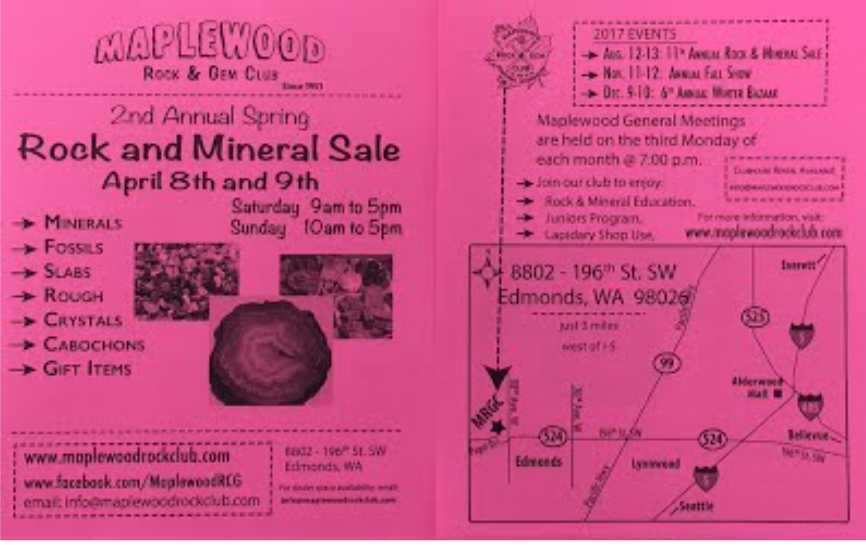
What comes to mind when you think of spring but green? With that in my head the other day, I decided to wander off just down the road and hunt a green jasper area I hadn’t browsed for years in the Fernley area.
Winter seems to have washed out the roads and trails in a few spots just a bit more than my rig wanted to handle easily, but it was sunny and warm so I just got out and hiked the hills. Despite the fact that the outcrops that I had expected to chip some nice chunks of this jasper out of were no longer there, I was able to pick up some nice chunks that winter deposited in a few of the creek beds and washes. I had to work for them, though. It took a lot of climbing around to get a respectable load of them.

As you can see, this area offers several shades of greens and patterns. The rock is pretty tenacious and takes well to cutting. Some pieces have brown or red colored patterns in them, and others small seams of drusy.
That was my spring solstice celebration this year. Next hunt will take me back to the wonderstone area for some lively pinks and yellows.
Happy spring, everyone!
Life’s short – Rock hard
I haven’t gotten an answer to my question of why the Sage Grouse, which I’ve seen neither more or fewer of in recent decades, only seem to be in trouble where the land is highly mineralized and should be rightfully protected for our use by current law.
Here is a link to the article in the region’s local paper:
This “environmental” action is actually a threat to the people and towns in the effected area – as are such areas in other states fighting the same BLM land grabs. These little towns thrive on the tourism from these mineral rich lands. When the BLM decides to shut down whole towns, we need to start taking a lot closer look at what they are actually doing.
The letter below, written by Gerald Gibeault, President of the Idaho Falls Gem and Mineral society will give you more information about the situation, and
Gerald Gibeault President Idaho Falls Gem and Mineral Society 2246 Brandon Dr. Idaho Falls, Idaho 83402 March 2, 2017
Subject: BLM to Ban Rockhounding with Hand Tools in Areas Targeted by the Draft Environmental Statement (EIS) for the proposed Sagebrush Focal Area Withdrawal.
To Whom It May Concern:
This letter is written to local jurisdictions on behalf of the Idaho Falls Gem and Mineral Society and recreational rockhounds everywhere. As president of the Idaho Falls Gem and Mineral Society, I am concerned that the draft Environmental Impact Statement (EIS) for the proposed Sagebrush Focal Area Withdrawal could be bad news for recreational rockhounding in our Gem State. Specifically, the Bureau of Land Management (BLM) intends to ban recreation rockhounding using hand tools in withdrawn areas. Only surface collection will be allowed.
I attended BLM’s EIS Public Meetings on February 16, 2017 in Idaho Falls and in Boise on February 24, 2017. I also discussed my concerns in a follow-up telephone call with Mr. Adam Merrill (BLM Geologist, Washington D.C. Office) on March 3, 2017. Mr. Merrill said that he had spent some time with the BLM’s lawyers discussing the rockhounding concerns that I had raised with him previously. I’ve summarized my understanding of the conversation with Mr. Merrill below:
As the BLM lawyers see it, the problem boils downs to whether or not the 1872 Mining Act (mining act) is in force. According to the lawyers, the mining act authorizes public right to locatable minerals on Federal land. While the rules that apply to rockhounding may be different from those that apply to hard rock mining operations, both get their authority to access locatable minerals from the mining act. Withdrawing land from the mining act also withdraws the public’s authorization to collect locatable minerals. It must be noted that the public will still be allowed to pick up rocks off the surface; but materials collected on the surface are typically very weather, fractured and therefore of little use to rockhounds.
The text shown below was taken from a BLM website:
https://www.blm.gov/co/st/en/BLM_Programs/minerals/locatable/locatable_minerals.print.html
“The federal law governing locatable minerals is the General Mining Law of 1872 (May 10, 1872), which declared all valuable mineral deposits belonging to the United States … to be free and open to citizens of the United States to explore for, discover, and purchase.”
“Mineral deposits subject to acquisition in this manner are generally referred to as “locatable minerals.” Locatable minerals include metallic minerals (gold, silver, lead, copper, zinc, nickel, etc.), nonmetallic minerals (fluorspar, mica, certain limestones and gypsum, tantalum, heavy minerals in placer form and gemstones) and certain uncommon variety minerals. It is very difficult to prepare a complete list of locatable minerals because the history of the law has resulted in a definition of minerals that includes economics.”
What every Idahoan should know!
Approximately 3 million acres are targeted for withdrawal in Idaho. Affected areas include much of the land in and around the Lost River basin between Challis and Arco, much of the Lost River mountain range, as well as huge swaths of land around Carey. Some of these areas are prime rockhounding country. If the proposal proceeds as currently planned, the public will no longer have access to the locatable minerals in the withdrawn areas for the next 20 years. For example, I will not be allowed to collect a piece of tube agate near the Doyle Creek road for the rest of my life!
How are local jurisdictions affected?
Idaho is called the Gem State for a reason. We live in a mineral paradise. Rockhounding is a tourist attraction. Because of our fortunate geology visitors are drawn to Idaho from around the world. The minerals of interest to rockhounds typically include jaspers, agates, and other minerals and rocks that have little or no commercial value. Rockhounds start with rough materials and create beauty. The activity provides an opportunity for both the young and the old to enjoy areas of our backcountry that are seldom visited by others.
Rockhounds stay in hotels and campgrounds, eat at restaurants, and buy gas and supplies. Revenue flows into communities with no more investment or effort than allowing access to minerals in nearby Federal lands.
What to do?
Help rockhounding survive in your area. PLEASE write a comment and send it to the BLM. Send a note to your congressman too. We are the Gem State! We live in a mineral paradise! Rockhounds are not a threat to sage-grouse habitat! There has to be a reasonable solution.
A sample comment form is attached at the end of this letter. A comment may also be submitted by email.
The last day to submit comments to the BLM is March 30, 2017. The BLM has to receive comments by that date. So, allow time for delivery if you use postal services.
Thank you for considering our concerns.
Gerry Gibeault (contact redacted to prevent spam)
HERE IS THE ONLINE COMMENT FORM for the Sage Brush Focal Area:
Here is the map of that land that they are set to grab:
http://blm-egis.maps.arcgis.com/apps/webappviewer/index.html?id=45b2d7896c36467aac3990b739d75a26
Other Links:
Contact information for BLM:
https://www.blm.gov/sites/blm.gov/files/Dear_Reader_Final.pdf
BLM information about sage grouse:
https://www.blm.gov/wo/st/en/prog/more/sagegrouse.html
]]>
